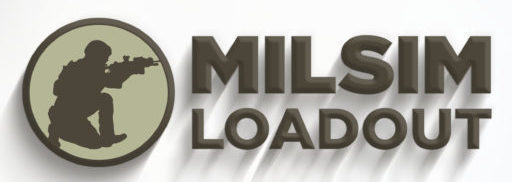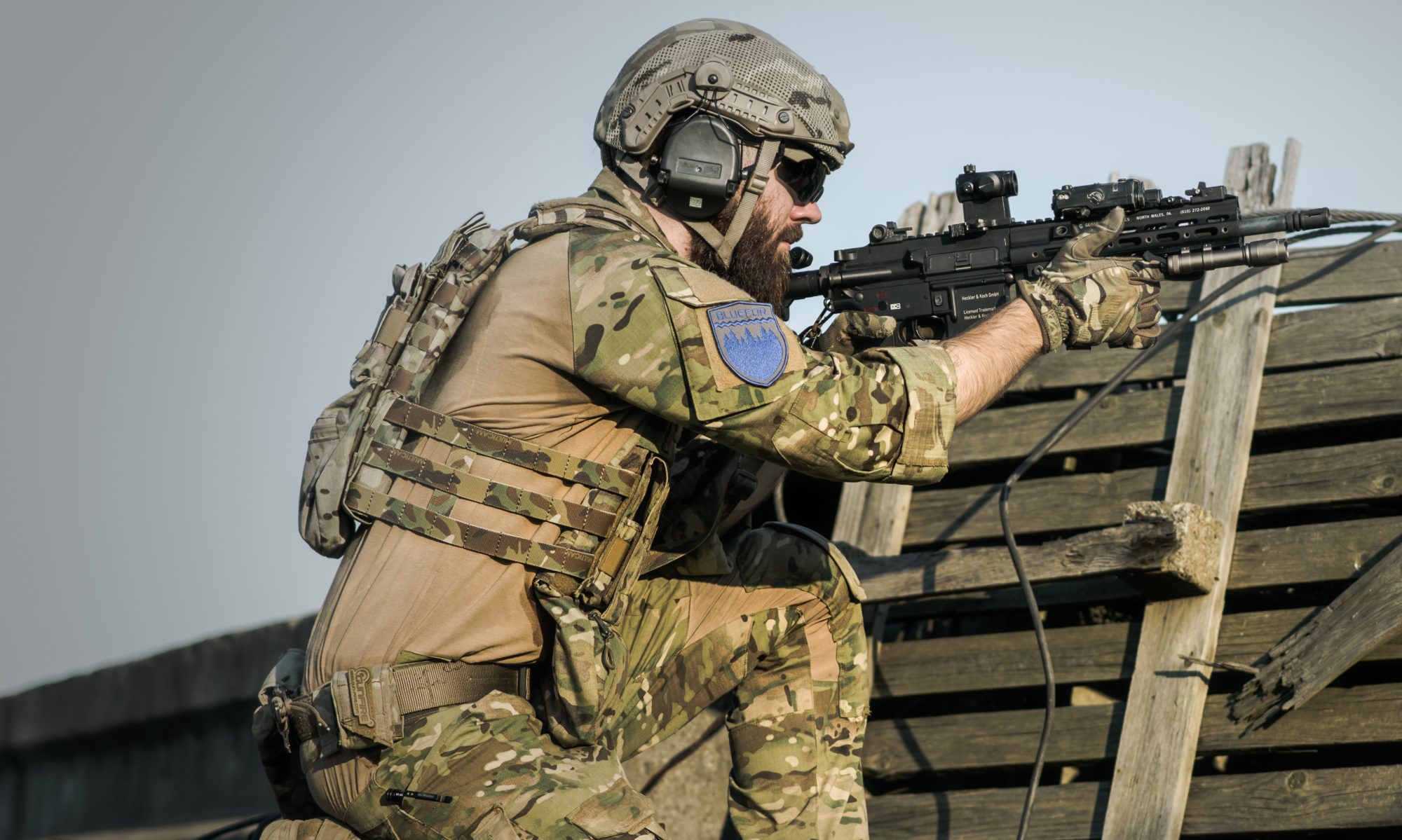We may earn money or products from the companies mentioned in this post.
When choosing a Milsim Loadout, one should always strike a balance between what is practical and what is purely aesthetic. In other words, do you need it, or does it just look cool? I have compiled a list of gear commonly utilized in Mil-Sim scenarios. Remember to check with event coordinators, as they may have their own list of items that should be brought to the field. Check the weather and be prepared for anything. And most importantly, HYDRATE, HYDRATE, HYDRATE! Dehydration is a fun killer.
MilSim Headgear:
A backward baseball cap like the Condor Flex Tactical Cap will suffice in most types of Mil-Sim scenarios. You can buy ballcaps with the same camouflage pattern as the rest of your kit. A good beanie may come in handy during cold nights. Night vision goggles (NVGs) may be utilized during night games. In this case, you may bring a replica helmet with night vision goggles (NVG) mounts
. Go-pro cameras may be mounted on helmets as well. Helmets will also offer the wearer higher levels of protection from close-range hits from airsoft pellets and paintballs.
Eye Pro for MilSim Events:
Eye protection is the most important form of protective gear that a player should have. In airsoft, eye protection may be purchased separately from the face and headgear. Shatter-resistant safety glasses and goggles may be purchased in a variety of styles. For paintballers, however, eye protection is generally built into the Paintball Mask, which covers the eyes and face.
Face Protection:
For airsoft, face protection is generally sold separately from head and eye protection, although some full masks are available. The half-face mask style, as sold by Outgeek, is most often utilized by airsoft players. In paintball, face protection is incorporated into the full mask.
Neck Protection:
Some players opt to use neoprene neck protectors. This is most often used in paintball because of the pain caused by getting hit by a paintball. Many airsoft players opt to use Shemaughs
, which is a scarf that can be utilized in many different configurations. Often, this scarf is sprayed with mosquito spray to keep mosquitos and other bugs away. For cold weather scenarios, a good balaclava
will come in handy for keeping the wearer warm.
Communication (COMS):
The level of realism and immersion that the player wants will determine the sophistication of radio communication utilized during Mil-Sim. Standard two-way walkie-talkies, tactical throat mics, and noise-canceling headsets are often utilized in Mil-Sim scenarios.
Shirt and Trouser:
The shirt and trousers are very important as they provide the wearer with overall protection from the elements. Carefully consider your environment when choosing the material and the camouflage pattern. Camouflage may also be dictated by team dynamics and the type of scenario being played, so check with teammates and coordinators before purchasing these items. Bring an extra set, just in case. ZAPT Tactical makes a very affordable shirt and trouser kit in many popular patterns.
All Weather Gear:
Does it get cold at night? Is it going to rain? You must ask these two very important questions before a scenario. Packing a Gore-Tex jacket and pant is highly recommended as cold and wet clothing will sap your energy and your will to fight.
Plate Carriers and Chest Rigs:
Let’s face it, a plate carrier will not be utilized to carry ballistic plates. Some will wear plates for added realism, others like a carrier’s solid and sturdy platform. In addition, others think they look cool. So, do you need a plate carrier, or will a chest rig suffice? Both plate carriers and chest rigs
often utilize the MOLLE platform to attach different pouches. The pouches that you will need will be dictated by the weapon and gear that you choose to carry.
For airsoft and magazine-fed paintball guns, standard GI magazine pouches will work for storing extra magazines. If you are using a hopper-fed paintball gun, you may need to purchase a rig with pod carriers for extra paintballs.
Other items that you may carry are pouches for airsoft and paintball grenades, peripherals like extra airsoft battery packs, waterproof notepads, flashlights, and secondary weapon magazines to name a few.
Once you have determined what you will place on your carrier or rig, be thoughtful about the placement of each item. Make sure your gear is accessible during a dynamic and stressful situation. Also, check for noise discipline by doing a jump test. Jump up and listen for any telltale sounds. If something is too noisy, try to secure the item with duct tape. You may not be able to mask the sound of paintballs or airsoft bb’s bouncing around in their cases.
Web Belts and Battle Belts:
A sturdy belt is very important in the field. You do not want your pants falling when you are running from cover to cover. Most utilize a military-style web belt like the Fairwin Tactical Belt, although some players opt for the Condor Gen II Battle Belt
. You wear the battle belt over an inner belt, just like a police officer’s Sam Brown. Many players attach side arm holsters, extra gear pouches, and other peripherals to the battle belt.
Knee and elbow pads:
You may not realize how important a good set of knee pads and elbow pads are until you are sitting in a prone position for 30 minutes, or crawling through rocky terrain. Call me a wuss, but I have to have knee pads when I play.
Hydration bladder and reservoir:
Hydration bladders will store much-needed water. Wear them like a backpack outside the carrier or even inside the carrier. If you do not have a water bladder, bring plenty of bottles of water or canteens. Stay away from caffeine and alcohol before and during ops!
Boots:
A decent pair of boots is extremely important to have. A good pair of waterproof combat boots will protect your feet and keep them dry. Having wet feet during an operation is extremely uncomfortable.
Gloves:
A good pair of gloves will come in handy and provide comfort when maneuvering through the various types of terrain that you may encounter. I only buy Mechanix Wear brand gloves, which have never disappointed me.
Primary Weapon:
Make sure you are comfortable with your rifles configuration. Sight your optics at about the range of engagement. This will depend on the scenarios type as outdoor and urban scenarios will have different ranges. Have extra magazines and know the event rules, as some events require a 30-round top-off for each magazine. I discuss primary weapons further in the articles Best Mil-Sim Airsoft Rifles 2018 and Best Mil-Sim Paintball Marker 2018.
Slings:
Do you prefer a single-point, two-point, or three-point sling? They all have their pros and cons. Whichever you choose to run, practice manipulating your weapon with the kit on. Slings have a tendency to get caught in all your “Gucci” gear. I personally run a two-point quick adjust sling made by Magpul
Secondary Weapon:
If you carry a sidearm, ensure you are comfortable with its manipulation. Practice un-holstering and re-holstering your sidearm without looking at it. This will help build muscle memory, and the instinct will take over during times of stress.
Extra Magazines:
Ensure you have extra magazines for all weapons systems. More is always better.
Backpack:
Choose your pack wisely. You can purchase backpacks in many different configurations. When packing for an op, you must strike a balance between what you must have and what’s nice to have. A good 50L Assault Pack pack will usually do the trick. Alice packs are great as well.
Extra Gear to complete your MilSim Loadout:
The following is a non-exhaustive list of peripherals that may come in handy.
-
- Bring at least two pairs of extra socks
and underwear for each day. It is always good to stay fresh!
- Keep extra shirts and trousers handy. Keeping clean is essential to for your well-being.
- A good sleeping bag
will elevate your comfort level.
- You will also need extra batteries
for your battery-powered devices like optics, airsoft guns, NVGs and more.
- Bring extra C02 or HPA tanks.
- A good knife
may come in handy.
- A good multi-tool
will ALWAYS come in handy.
- Of course, have extra BB’s and speed loaders
.
- Extra Paintballs and extra pods
are essential. Pods will act as magazines for your hopper fed paintball guns. Make sure pods fit in the pouches that you purchase.
- A good flashlight
or two is good to have. Some lights have red light attachments that help reading maps during stealthy nighttime ops.
- Maps and waterproof notepads
along with waterproof pencils or are helpful taking notes in rainy weather.
- A waterproof GPS device like the Garmin Foretrex 401
is also good to have, especially if you go off on your own.
- Bring at least two pairs of extra socks

